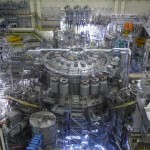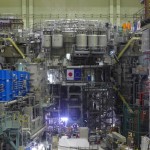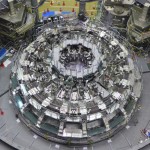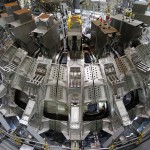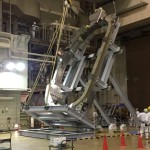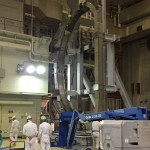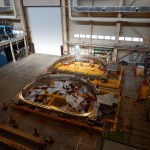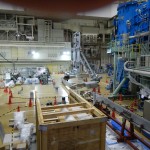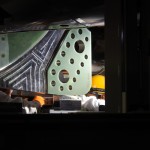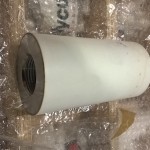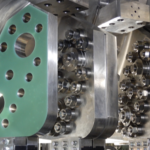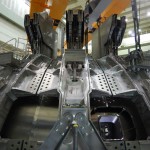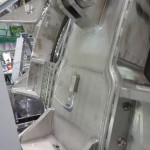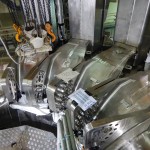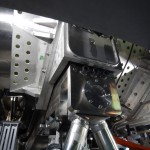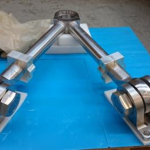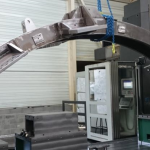Integrated Commissioning Status on 09.07.2021
Following the incident on 9th March 2021 involving Equilibrium Field Coil No 1(EF1), the joints of the EF1 feeders were found to have been damaged during the coil energization test. Experts in Japan and in Europe have jointly investigated the root cause of the incident. The measures needed to recover have been identified and a revised schedule for the integrated commissioning has been prepared.
It was determined that the primary reason for the damage to the joints was insufficient insulation at the point where a quench detection (QD) cable emerged from the ground insulation around a joint. A short circuit occurred due to this insufficient insulation and the arc formed damaged the shells of the EF1 terminal joints. This in turn allowed a helium leak to the cryostat.
The insulation of the joints will be reinforced so as to ensure enough insulation capability. Moreover, other joints with a similar structure will be repaired as well in order to prevent recurrence elsewhere. Furthermore, other joints without a similar structure will also be reinforced in view of thorough prevention of recurrence. The repair on site will be carried out under the thorough quality management. After the repair work, the high voltage holding capability will be tested under locally-simulated worst-case conditions to confirm a sufficient insulation capability. To complete the repair and the test, the process to be used on site will be thoroughly qualified and it will be shared thoroughly among the workers.
Then in around February 2022, vacuum evacuation of the vacuum vessel and the cryostat will start and cooling down of the super-conducting coils will follow to resume the suspended integrated commissioning of JT-60SA. The experience and knowledge obtained from this incident is being widely disseminated to support the consolidation of knowledge necessary for ITER, DEMO and any future superconducting tokamak.
Integrated Commissioning Status on 30.04.2021
During the coil energization test of Equilibrium Field Coil No1(EF1) with the high voltage of 5-7 kV in March 2021, the coil current increased rapidly and interrupted by the interlock of over current in power supply. After few minutes, the pressure in the cryostat increased from 10-3 Pa to 7000 Pa. After the JT-60SA was safely stopped, the integrated commissioning was suspended.
To observe the current feeders inside the cryostat, the temperatures of superconducting coils have been increased from -269 ℃ to room temperature for 20 days, and vacuum vessel and cryostat were vented on 8th, April. Melted spots were observed with the marks of the discharge on the outer shell of the terminal joints of the EF1 coil, which is a part of the EF1 current feeders with He cooling channel. From the visual inspection and analyses, the discharge was considered to be caused by an insufficient voltage holding capability at the joint of the current feeders with nominal voltage of 10 kV. The pressure rise of cryostat was caused by the He leakage through the melted spots on the current feeders. No damage has been observed on the EF1 coil itself.
An analysis to identify the root cause is currently underway involving many experts in Japan and in Europe. This effort will allow to effectively repair the damaged terminal joint as well as make sure this will not happen in other similar areas. Key will also be to later widely disseminate such analysis to support the consolidation of knowledge necessary for ITER, DEMO and any future superconducting tokamak.
Integrated Commissioning Status on 12.03.2021
While the JT-60SA was completing some final commissioning steps, last Tuesday, at about 9PM JST, during high voltage commissioning of one of the poloidal field coils there was an unexpected increase of current. The magnet is now being warmed from cryogenic temperature all the way to room temperature so that access in the cryostat can be gained, to verify the exact problem and then immediately set out remedial actions.
A root cause analysis will also be carried out to make sure such problem will not happen again and to transfer this experience to the ITER colleagues
02.03.2021 – JT-60SA successfully reaches its full design toroidal field
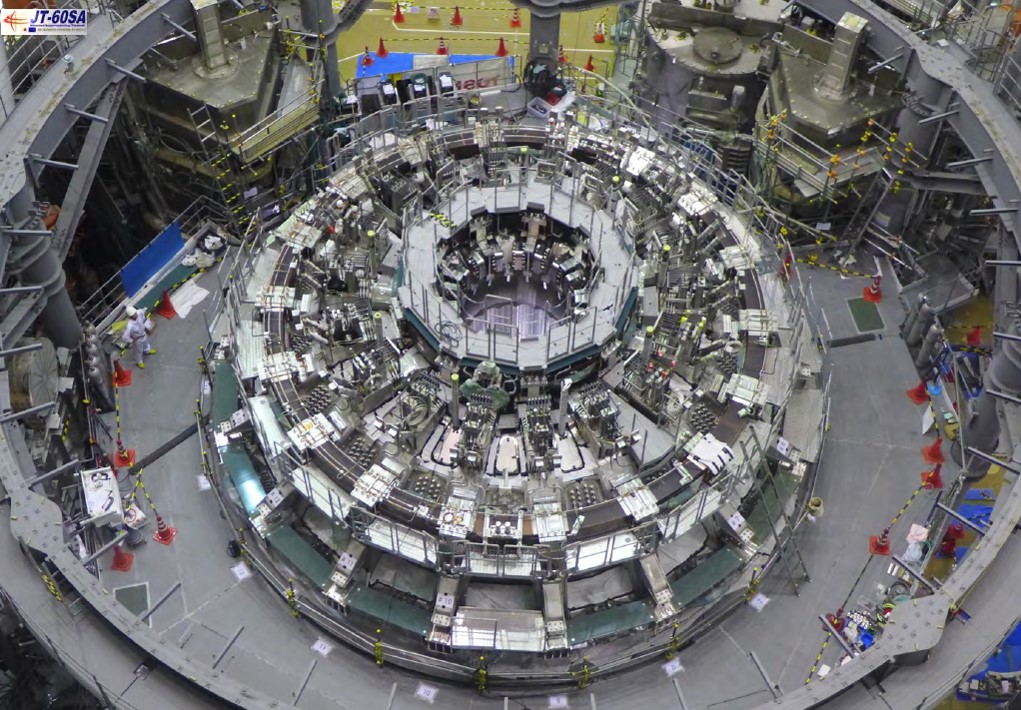
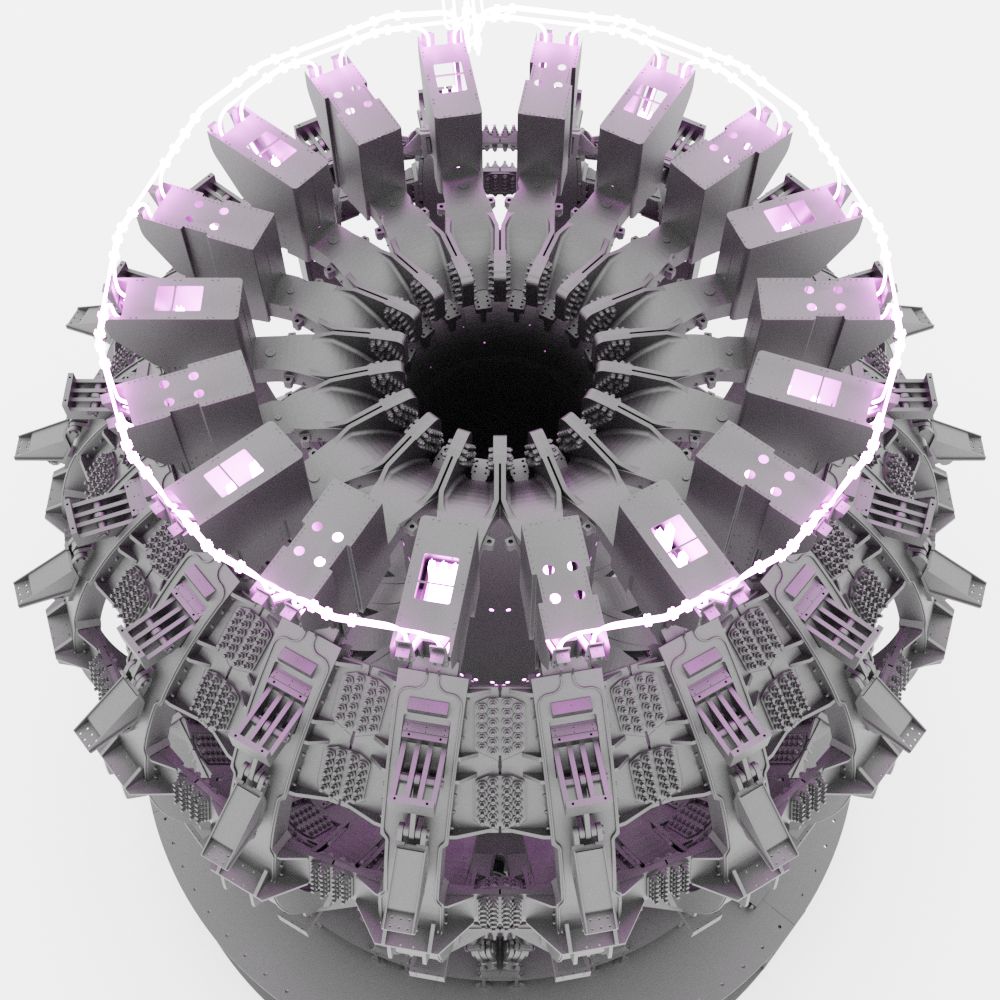
Today the toroidal field magnet was successfully energized with a current of 25.7kA therefore reaching its full design magnetic field.
The toroidal field magnet comprises 18 D-shaped coils arranged in a ring, with the straight sections of their D-shapes pressed together as shown below. The JT-60SA plasma will be created inside the toroidal (i.e. shaped like a ring doughnut) vacuum vessel inside them (passing through the middle of each D). Each of the 18 coils is 7.5m high and 4.5m wide and together they weigh 370 tonnes. They produce a magnetic field running around the torus which has strength of 2.25T at the centre of its cross section. This field is fundamental to confining the superheated plasma of the tokamak.
During energization the coils move as illustrated in the animation (the actual movement is magnified 100 times), with their curved outer legs sliding within their support structures.
The successful generation of the toroidal field demonstrates the simultaneous operation of numerous tokamak systems, in particular the cryoplant, cryodistribution, cryostat and thermal shields maintaining the magnet at 4.2K, the power supply energizing it, the instrumentation ensuring its safe operation and the central control system supervising them.
The New JT-60SA Website Is Now Live!
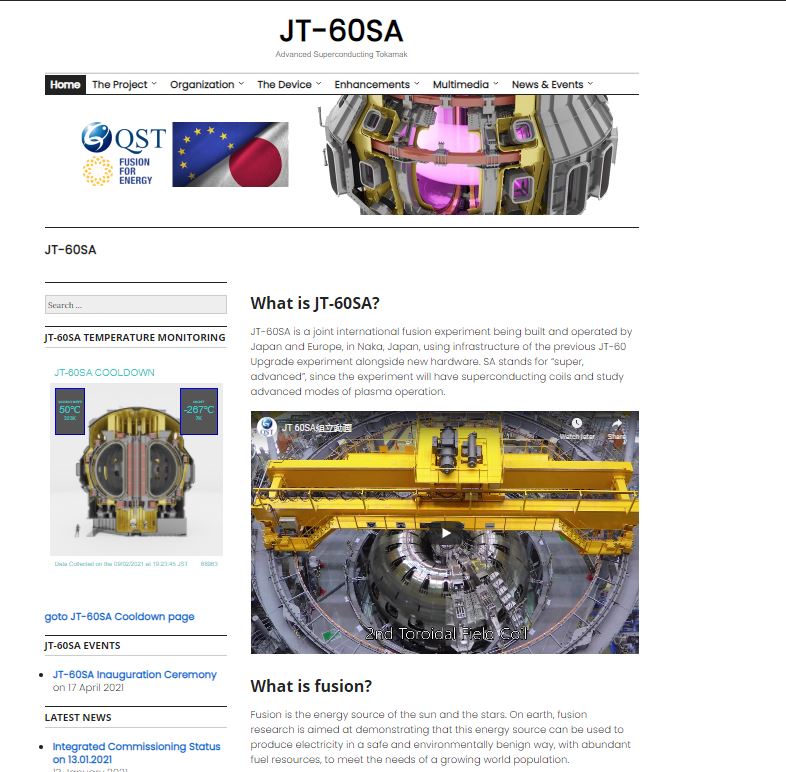
We are pleased to announce the launch of our brand new JT-60SA website!
The new website replaces the former JT-60SA one with updated contents and style. It aims to provide the visitors with information on JT-60SA and its recent updates, while introducing the project to a wider general public, including students, the press, and researchers.
The new website will be regularly updated with interesting audiovisual information and research highlights of the JT-60SA project in Naka, Japan.
Integrated Commissioning Status on 13.01.2021
First coil energization
Today the first of the superconducting tokamak coils was supplied with power. Equilibrium field (EF) coil 2, located towards the top of the tokamak, was supplied with up to 1 kA by about 21:00 JST. The EF 2 magnet is almost 10m in diameter and weighs over 30 tonnes. This is a major project milestone, following the recent completion not only of the cooling down of the magnet system to 4.5 K but also the completion of the combination testing of the power supplies. Today after confirming the temperatures, pressures and flow rates of the cryogenic distribution system and testing the effects of the quench protection systems with synthetic signals, it was finally possible to send current to the coils whose field will soon confine JT-60SA plasmas. A quench occurs when a superconductor loses its ability to carry current without resistance. In these circumstances the magnets must be discharged rapidly to avoid damage. In the next days the current supplied to EF2 will be gradually increased as the quench detection circuits and the power supply controllers are tuned. The stainless steel vacuum vessel has a double wall and is heated by passing hot nitrogen gas between the inner and outer shells. The gas is heated electrically in the torus hall basement and is circulated in a closed loop. The baking of the vacuum vessel causes a substantial increase in the heat radiated to the thermal shield around the cryogenic magnets and a corresponding increase in liquid nitrogen consumption by the cryoplant keeping it cold.
Integrated Commissioning Status on 02.12.2020
Vacuum Vessel Baking
Having cooled down the magnets in the cryostat, now the vacuum vessel is being heated up to 200°C. The purpose of this ´baking´ process is to drive out moisture and other impurities from the surfaces inside the vacuum vessel sufficiently to provide the ultra high vacuum needed for high quality plasma experiments. The presence of too great a quantity of impurities can prevent the reliable formation of a plasma. It can also cause too much energy to be lost from the plasma or cause it to disrupt, ending out of control. In particular the graphite armour covering about 50% of the straight section of the inner wall and the open divertor running around the top of the toroidal vacuum chamber can absorb water which needs to be baked out.
The stainless steel vacuum vessel has a double wall and is heated by passing hot nitrogen gas between the inner and outer shells. The gas is heated electrically in the torus hall basement and is circulated in a closed loop. The baking of the vacuum vessel causes a substantial increase in the heat radiated to the thermal shield around the cryogenic magnets and a corresponding increase in liquid nitrogen consumption by the cryoplant keeping it cold.
Integrated Commissioning Status on 26.11.2020
JT-60SA Magnets now superconducting!
In the last 24 hours the magnets reached a low enough temperature to become superconducting. First the resistance of the niobium-tin windings of the central solenoid could be seen to drop to zero and then, about 12 hours later, the toroidal field and equilibrium field coils made from niobium-titanium followed.
The electrical resistance of the magnet windings is monitored primarily as an additional means to measure the average temperature of the winding, since their resistance depends on their temperature. However, below a certain cryogenic temperature the resistance of the materials drops to zero and they can carry current without consuming any power. This happens at about 18K for Nb3Sn and at about 10 K for NbTi. It is no longer possible to derive their temperature from that measurement – but it confirms their most important property!
Exploiting this phenomenon is a key feature of the JT-60SA tokamak that will enable it to generate strong magnetic fields during long experiments.
You can see the current magnet temperature here.

